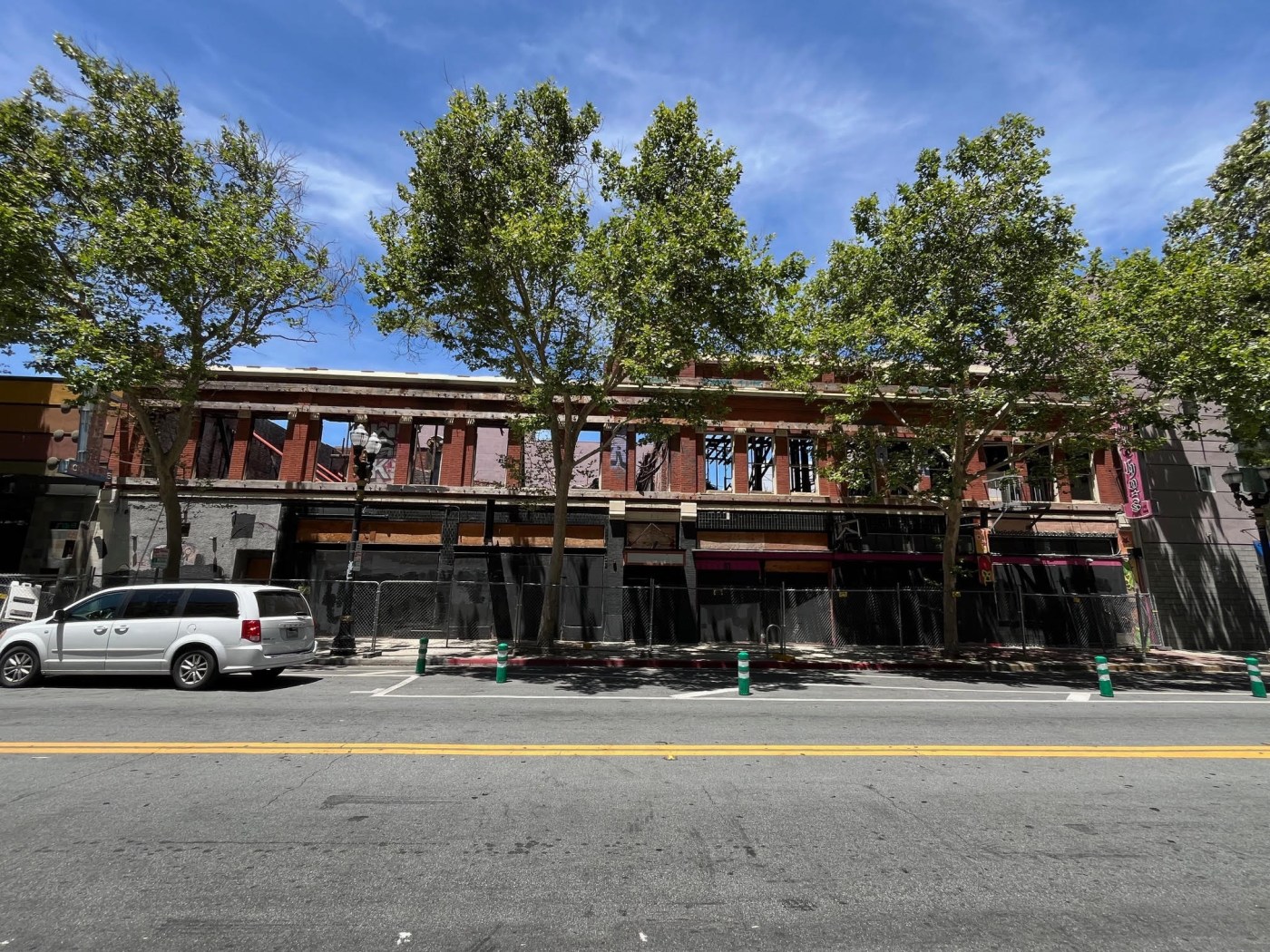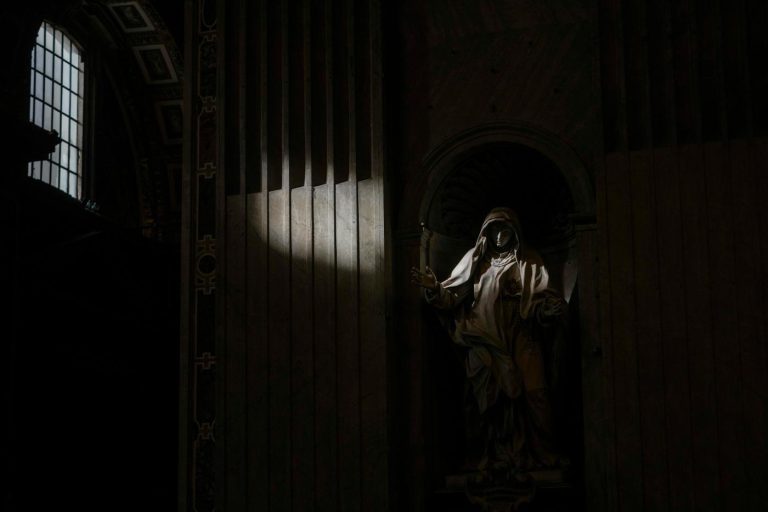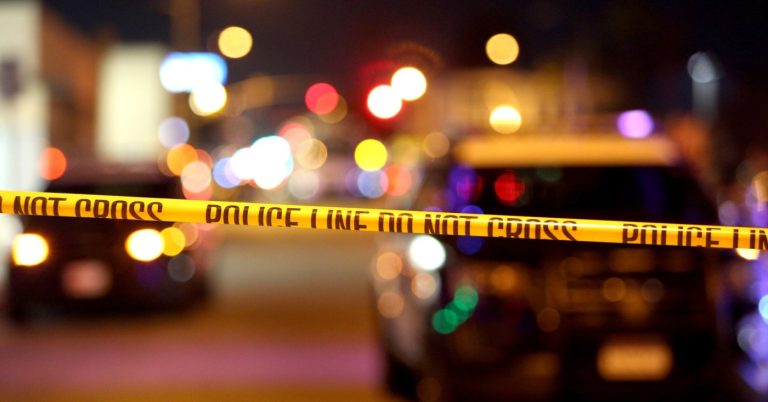SAN JOSE — A burned-out hotel, an abandoned historic church, a decaying bus terminal and a deserted movie palace next to a boarded-up strip mall — all have become glaring reminders of the growing blight that dots San Jose’s landscape.
It’s a sobering situation that has the city’s top leaders and others increasingly alarmed and has raised calls for action.
“We are still not seeing nearly enough accountability for absentee property owners burdening the rest of the community with their blighted and vacant properties,” San Jose Mayor Matt Mahan acknowledged in an interview.
Critics believe that San Jose’s code enforcement unit needs sharper tools to wield against property owners who allow their real estate and buildings to rot and deteriorate and say they remain perplexed as to why the city has delayed action on this problem.
“The Code Enforcement Division needs to come to the City Council and tell them what they need to be successful,” said Bob Staedler, principal executive with Silicon Valley Synergy, a land-use consultancy.
In June, the city pushed back to later this year a wide-ranging study session that will scrutinize the city’s blight woes.
“It’s confounding that the City Council wouldn’t want to have a study session in the near term rather than later,” Staedler said. “I’m not sure who would speak out against removing blight. If ever there was a consensus-driven goal, eliminating blight would probably only be topped by ending homelessness.”
“Blight is a growing problem,” said Leah Toeniskoetter, president of the San Jose Chamber of Commerce. “Blight is one of the most challenging detriments to a place, whether it is your neighborhood or a local business district. It makes you want to avoid that place and walk past it.”
Jim Salata, owner of San Jose-based Garden City Construction, a harsh critic of the city’s efforts to combat blight, also believes the city’s response is sluggish at best.
“Last August, the city was supposed to have a pilot program on blight, but nothing has changed,” Salata said. “It’s just a matter of people who work for the city doing their jobs. There’s no excuse for this to still be a problem.”
While Mahan said he, too, is anxious to have the issue resolved, he added that he is waiting for a report from the city manager with the next steps.
“It’s time to shake up the code enforcement function at City Hall and ensure we are fully leveraging the powers of our City Attorney’s office,” Mahan said.
Blight is particularly acute in downtown, still struggling to recover from the economic effects of the pandemic, and impeding city efforts to revitalize the area.
Several months ago, a sudden fire consumed two Victorian-era homes in downtown San Jose, and piles of scorched debris remain on the North Fourth Street site.
Salata has prepared a formal list of what he considers blighted properties in downtown San Jose.
The survey includes several properties where development projects were planned but have yet to occur, leaving sites blighted and unbuilt.
Salata’s list of downtown San Jose blight includes the old historic church at 43 East Saint James Street, a former Greyhound Station at 70 South Almaden Avenue, and the burned-out Lawrence Hotel, a historic building at 69 East San Fernando Street.
A fire scorched and gutted the old hotel in January 2021. Years later, the property owner has yet to repair or remediate the two-story structure. The historic building remains an unsightly husk.
Some solutions for the old hotel are finally emerging, however.
This week, the city’s Appeals Hearing Board demanded that the hotel property owners, San Mateo-based Eagle Hills Property, GTL Investments, Kevin Louie and Jose Castillo begin the remediation and repair.
Louie and Castillo complained to the board that sky-high interest rates and inflation have made it tough to land financing to remediate the building’s problems.
The two business executives claimed during the Aug. 8 hearing that they weren’t merely absentee owners with an indifferent attitude about repairing the hotel site.
Nevertheless, a city report sketched a picture of a sedate pace by city officials and the property owners to address the eyesores and hazards at the burned-out hotel since the early 2021 fire.
It took two months for city officials to even identify the owners of the property in the wake of the fire.
City inspectors visited the site numerous times over the three-plus years since the fire, taking frequent photographs, city documents show.
Visits to the Lawrence Hotel produced disquieting discoveries, including what a city inspector found in September 2022 — graffiti, a homeless encampment and fencing that was open and accessible to unauthorized people.
Even though these code violations date back to January 2021, it was only on Aug. 8 that a city panel ordered specific action, such as painting, removing graffiti and other improvements.
“Reversing blight is more complex than people realize,” said Alex Stettinski, chief executive offer with San Jose Downtown Association.
Some grassroots merchants, including Salata, are creating strategies to remedy the downtown blight maladies.
“We are tired of the inaction of city departments,” Salata said. “We’re developing a plan to do something about it.” He didn’t reveal the still-evolving game plan.
Meanwhile, the problem persists without a solution, which dismays Toeniskoetter.
“I’m looking at buildings that have been there for years, burned-out and blighted,” Toeniskoetter said. “That can’t be allowed to continue.”












